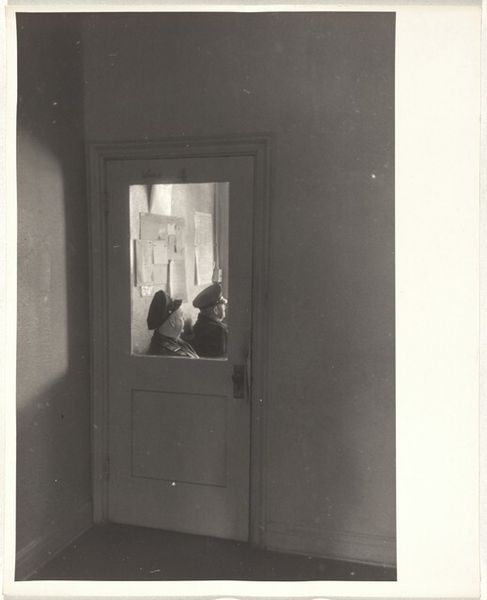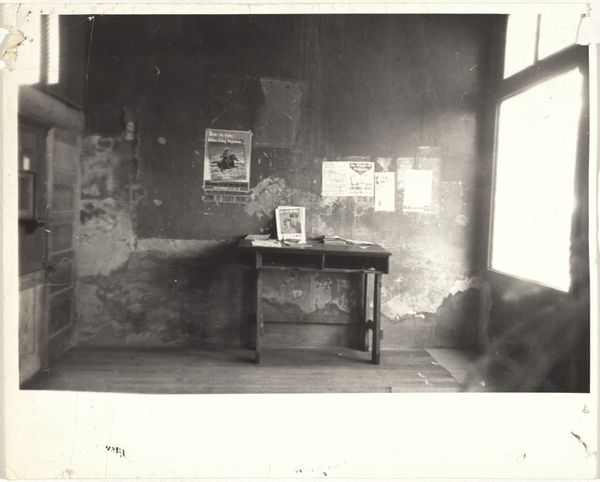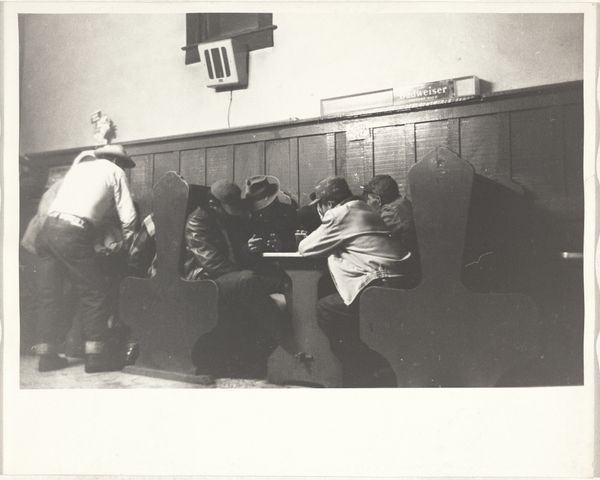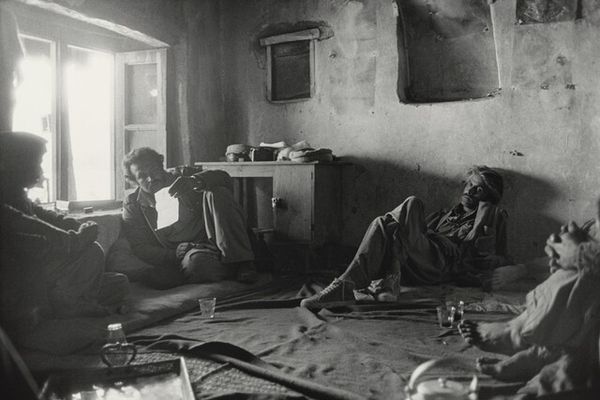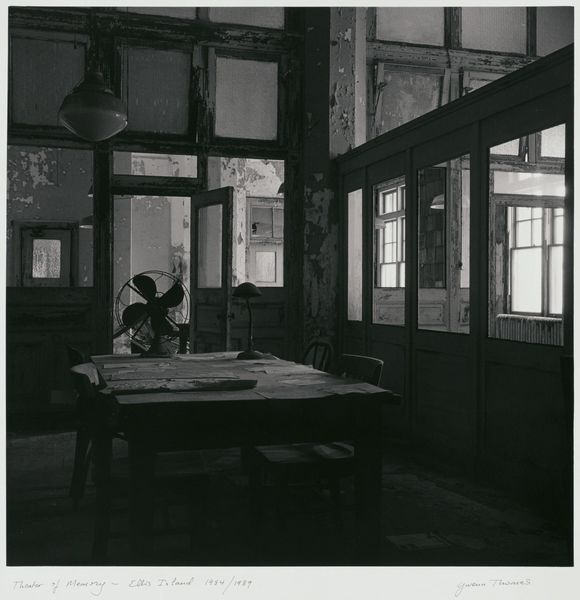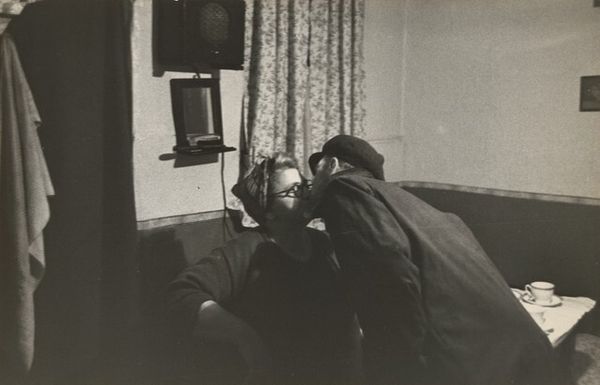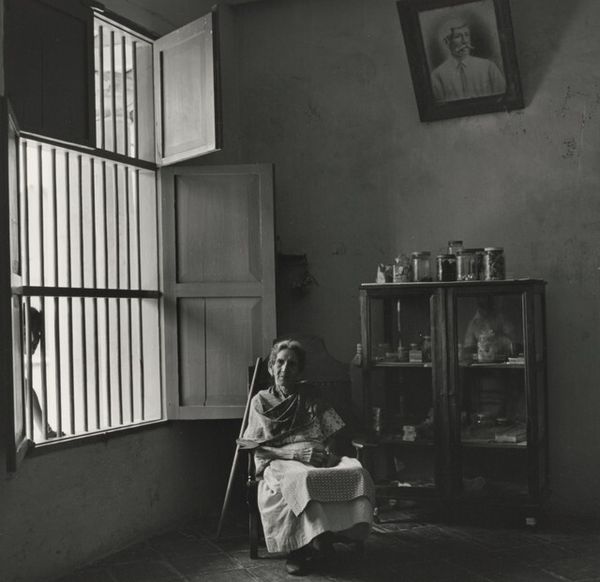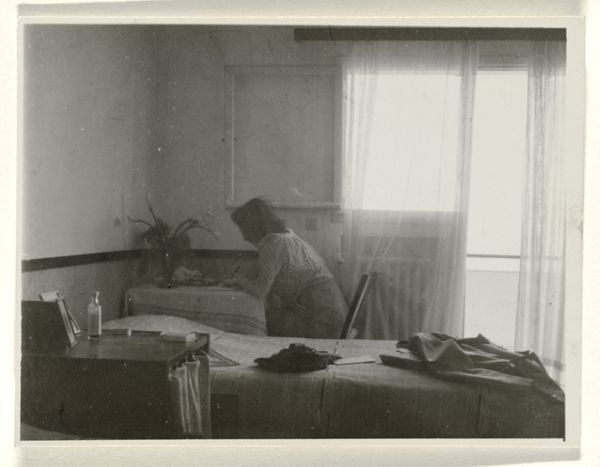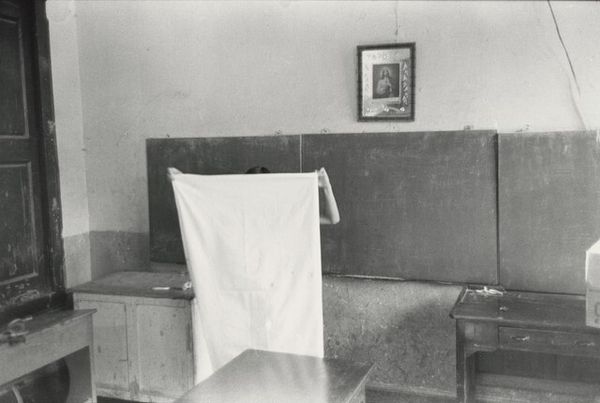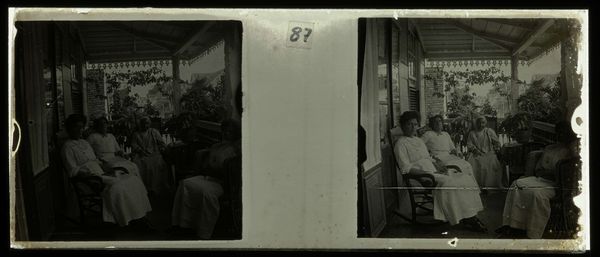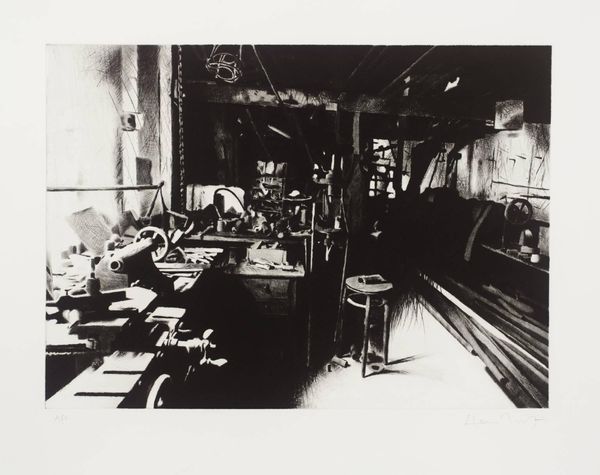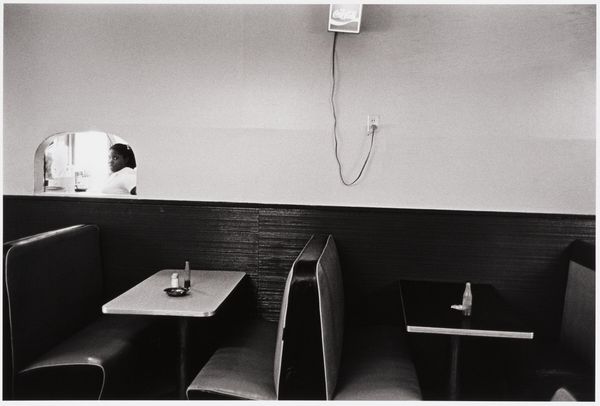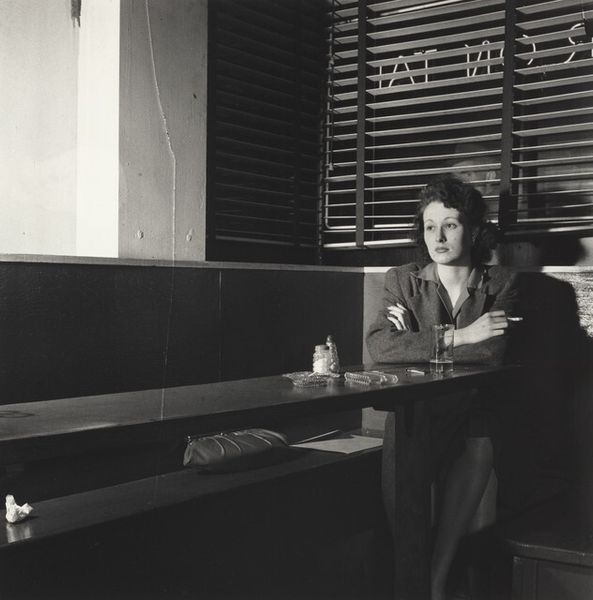
photography, gelatin-silver-print
#
portrait
#
black and white photography
#
landscape
#
street-photography
#
photography
#
black and white
#
gelatin-silver-print
#
monochrome photography
#
monochrome
#
realism
#
monochrome
Dimensions: image: 19 × 28 cm (7 1/2 × 11 in.) sheet: 24.5 × 35 cm (9 5/8 × 13 3/4 in.)
Copyright: National Gallery of Art: CC0 1.0
Curator: What grabs me first about this piece is its sense of contained intimacy. Editor: Intimacy hemmed in, almost claustrophobic, yes. Ed Grazda took this gelatin silver print, titled "Urubamba, Peru," in 1974. The high contrast and cramped composition throw a curious light on labor. Curator: I feel this heavy silence. It feels like a world worn into its bones. The textures alone—the newspapers plastered like desperate wallpaper, the rough hewn tables, all framed by a stark window—narrate a story even before your eyes focus on the figures seated there. Editor: Precisely! Consider those materials: cheap newsprint, worn textiles hastily sewn, basic carpentry. The construction itself reveals resource scarcity and improvisation in daily life. The table, maybe cobbled together from discarded wood. Look at the roughly finished edges, hinting at rudimentary tools and the handiwork involved. It's fascinating how photography, this 'high art' medium, here immortalizes such quotidian materiality. Curator: And look closer… their faces are etched with stories, yet turned slightly away. It's a study of how labor writes itself onto a person's presence. There is beauty there—of a sort—that arises from something well used, the kind you never see brand new but only develops in deep time. It echoes what survives despite the harsh conditions surrounding it. Editor: It’s a testament to endurance, really. Note the bottles on the table too, possibly local brew or something self-made. It emphasizes local systems of sustenance, far outside global markets or conventional notions of progress. Even the choice of gelatin silver points toward how photography became accessible via mass-production—thus how these fleeting glimpses could be preserved across divides in social experience Curator: I wonder if those newspapers are from Lima or Cuzco? You see bits of other places carried right here, this moment. Does that change this at all for you or suggest some friction about larger society encroaching locally or do they remain isolated through consumption. Editor: Both could be correct. This tension shows complex supply chains. Curator: Knowing that all, one sees layers where before was only light and shadow. A portrait of person and circumstance. Editor: Absolutely—a captured instant that embodies greater historical, material forces. And there's value, isn’t there, in noticing where the frame sits within those structures, what and who gains visibility in this context? Curator: Absolutely. What an illuminating excavation. Thank you for that!
Comments
No comments
Be the first to comment and join the conversation on the ultimate creative platform.
